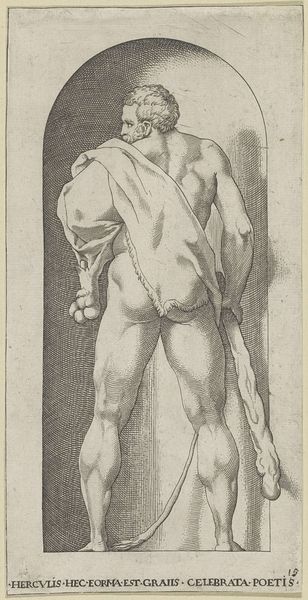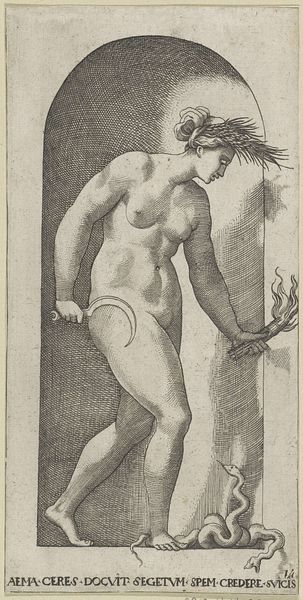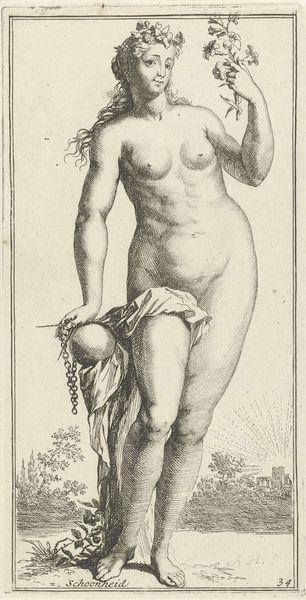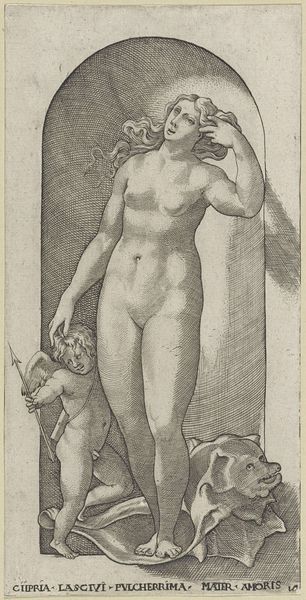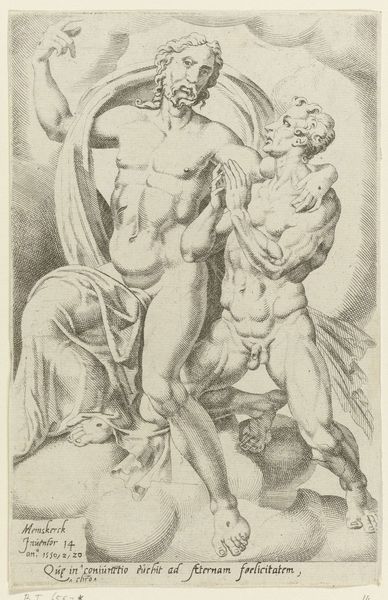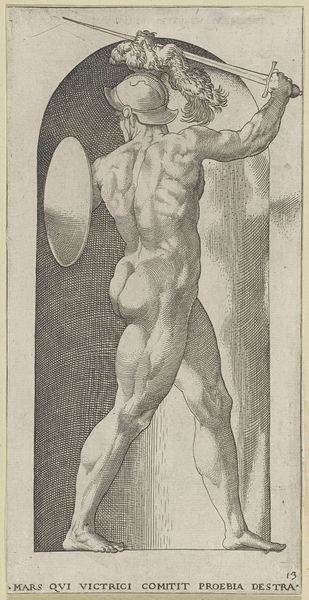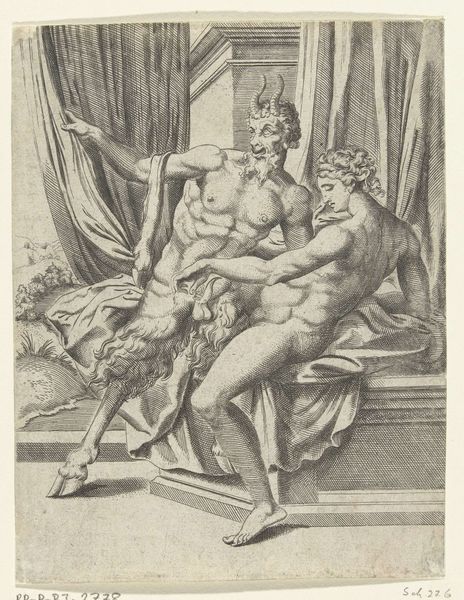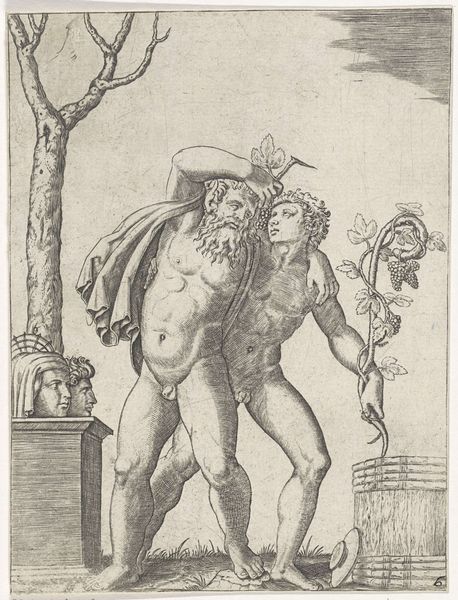
print, engraving
# print
#
figuration
#
11_renaissance
#
history-painting
#
nude
#
engraving
Dimensions: height 214 mm, width 107 mm
Copyright: Rijks Museum: Open Domain
This print of Bacchus was made by Jacob Binck in the 16th century, using the technique of engraving. Look closely and you can see how the artist used a tool called a burin to cut lines into a copper plate. The quality of these lines – their depth, density, and direction – determines how the eye reads the image. Notice the area of dense hatching in the background, which creates a sense of shadow and depth, setting off the smooth, unmarked surface of Bacchus’s body. Binck was a skilled professional, and the image would have been printed in multiples, and distributed widely. In its own way, it’s an early example of industrial production; it is not quite a commodity, but exists in a space between art and commerce. The value of this print resides not only in the image it conveys, but the labor and skill required to produce the copper plate from which it was made. By appreciating this, we can look beyond traditional art historical categories and understand the broader cultural significance of works like this one.
Comments
No comments
Be the first to comment and join the conversation on the ultimate creative platform.

